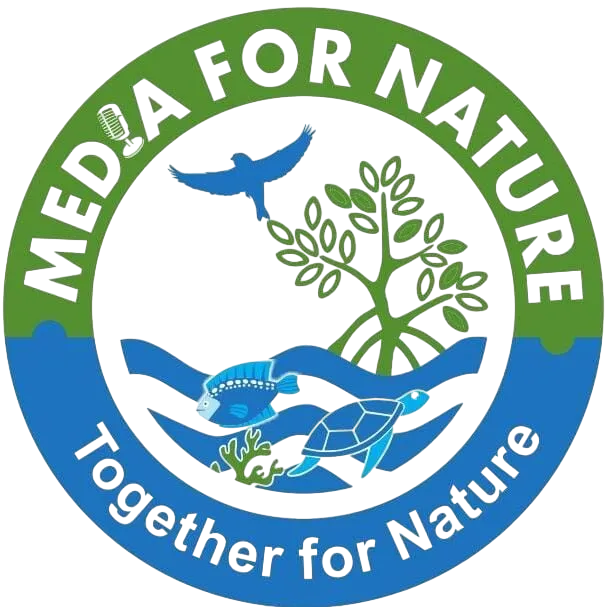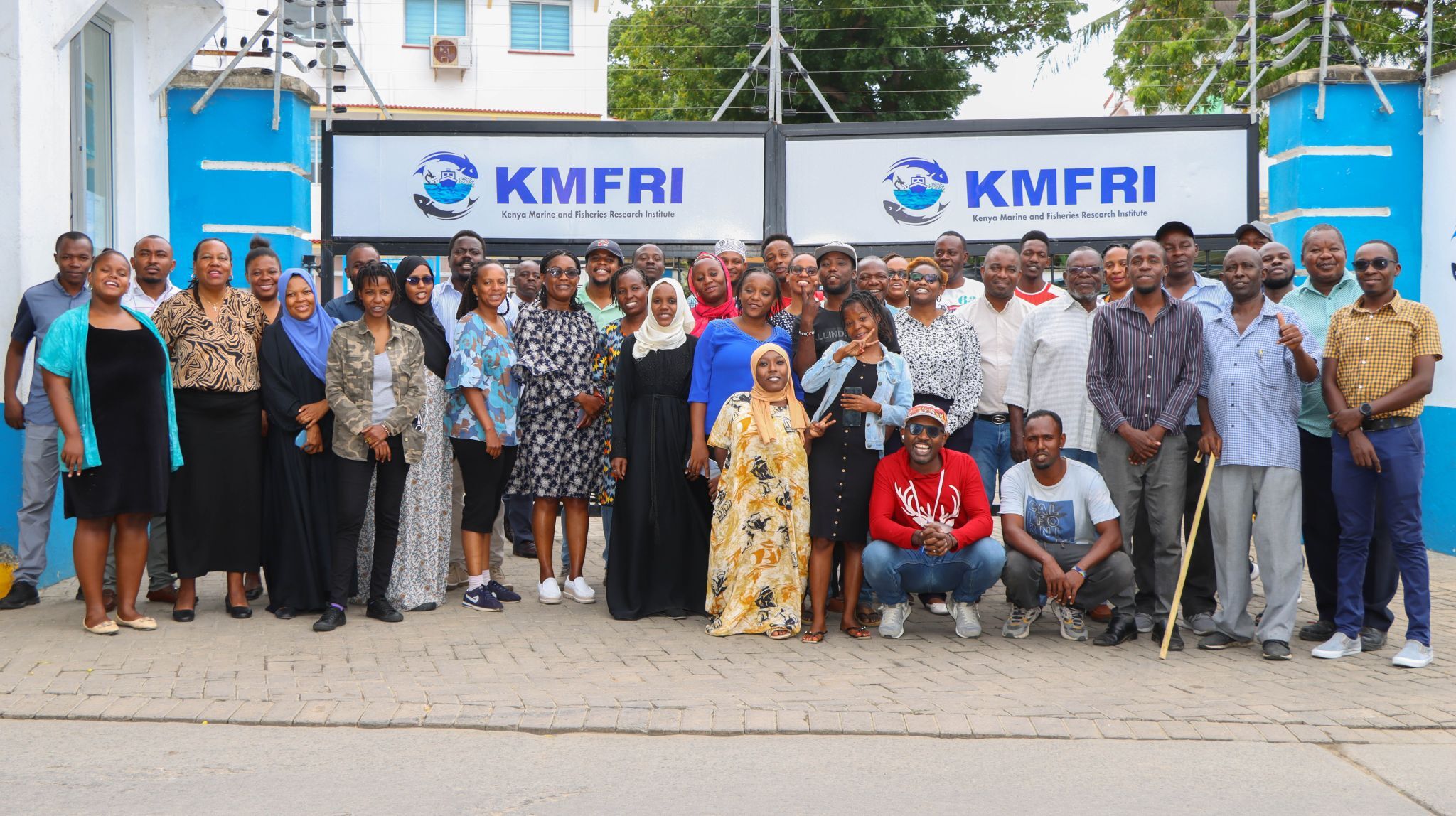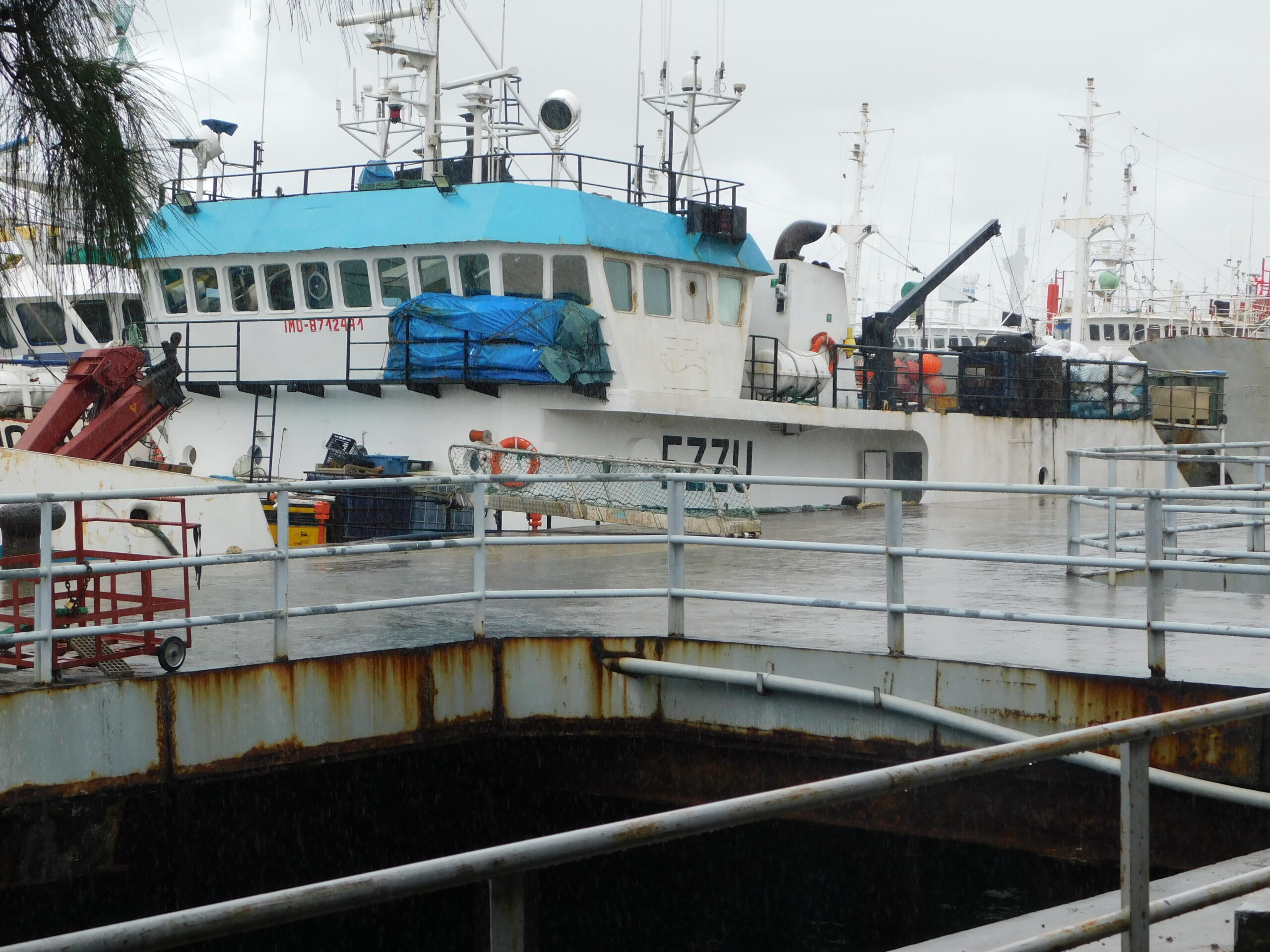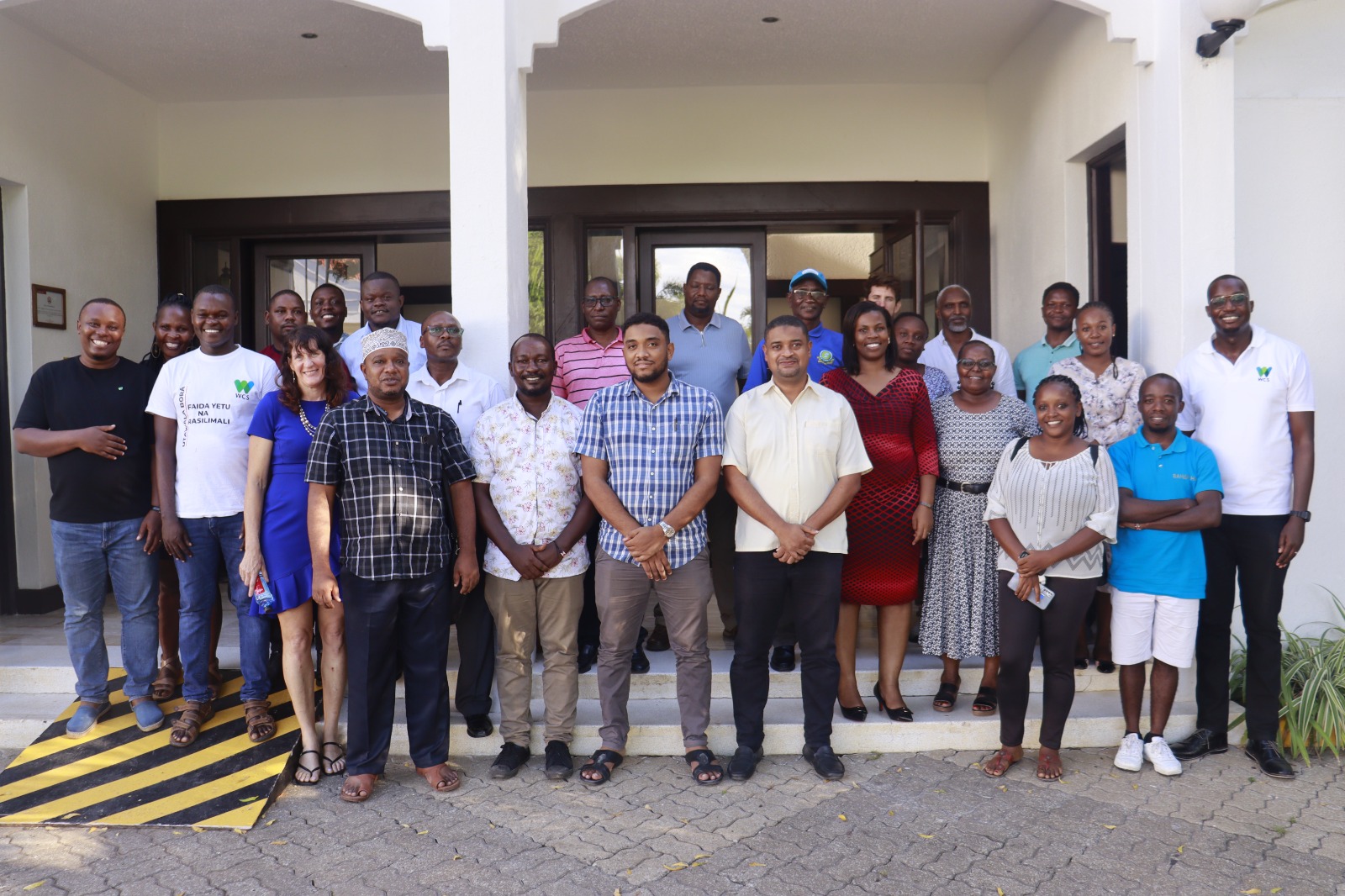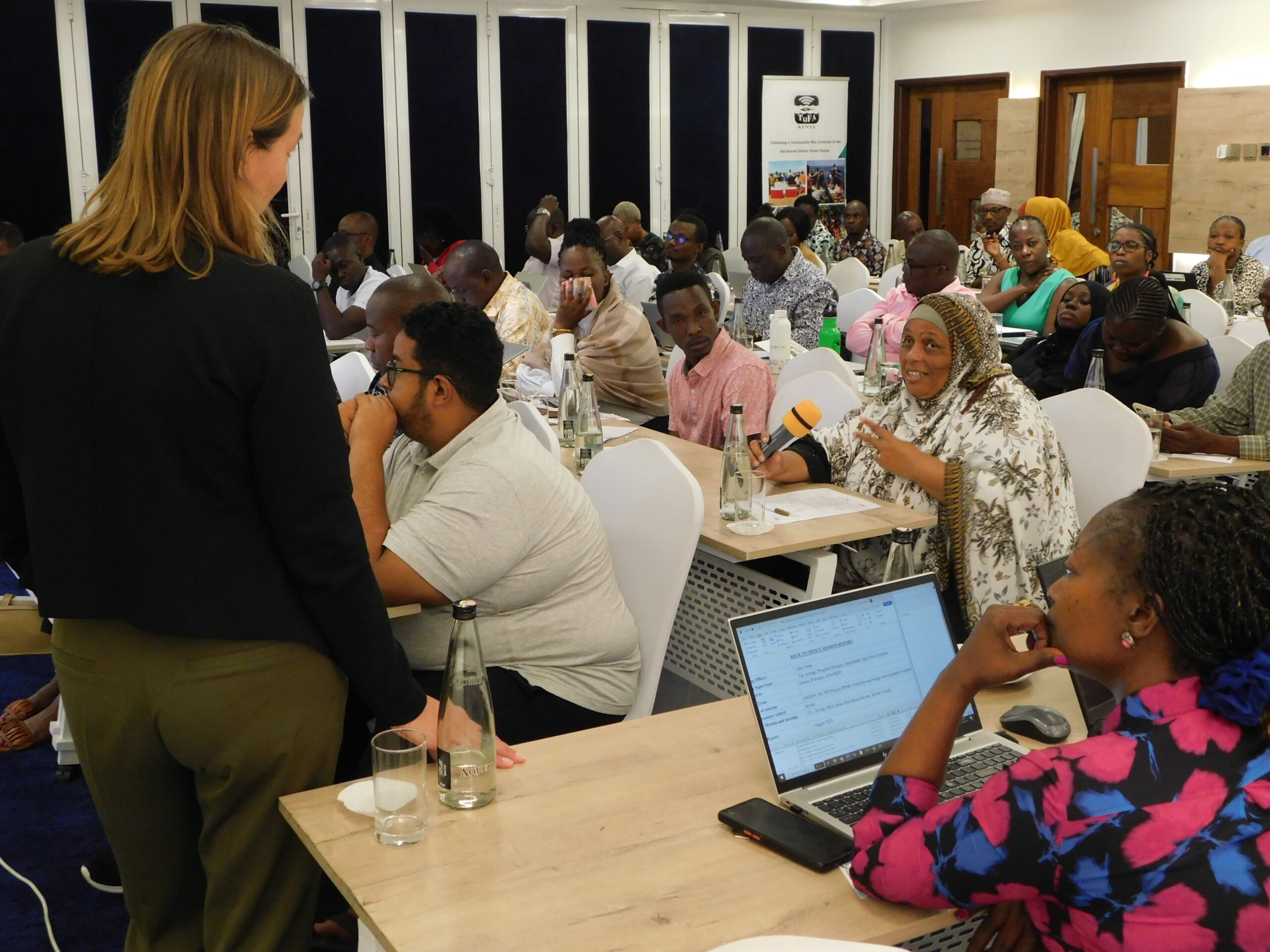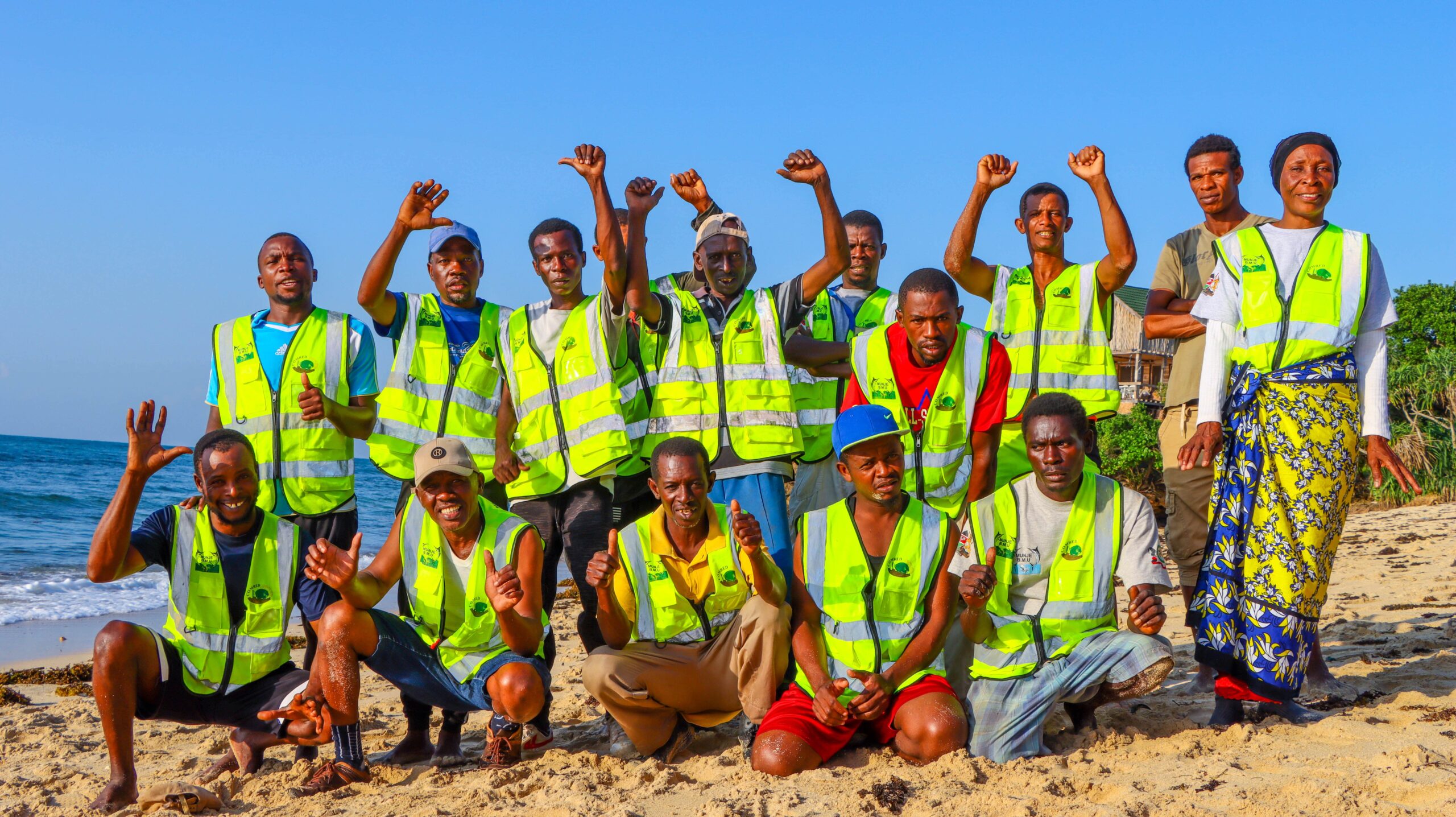Group Photo of Scientists and Artists Who Attended the Ocean Literacy Training Workshop. Photo Credit KMFRI
The Kenya Marine and Fisheries Research Institute (KMFRI) recently hosted a groundbreaking Ocean Literacy Training Workshop in Mombasa, drawing over 40 participants from across the Kenyan coast and the Western Indian Ocean region.
This innovative event marked the first time that KMFRI has integrated art into science communication, a move designed to make complex scientific concepts more accessible to the public.
KMFRI Principal Research Scientist, Dr. Jacqueline Uku, opened the workshop by emphasizing the importance of collaboration between scientists and artists to raise ocean awareness in public spaces and influence policy. She acknowledged that traditional scientific reports are often too complex for the average person to understand quickly.
“Scientists often present their findings in technical language, making it difficult for the general public to grasp.
“We recognize the need to involve artists to translate our reports into more accessible and understandable formats for the community,” Dr. Uku explained.
The workshop also highlighted the untapped potential of coastal resources, which, despite their abundance, have not been fully utilized to benefit local communities.
Dr. Uku pointed out that numerous marine species could be depicted artistically and sold, a practice less common than with terrestrial animals. She stressed the importance of including artists in these efforts to create more artwork that educates the public about the ocean.
“In our research on Bill Fish, we found that artistic depictions of marine species are scarce, even in coastal areas, compared to those of terrestrial animals,” Dr. Uku noted.
She added, “Additionally, women are underrepresented in the art community, particularly in painting, hence there is a need to spread ocean literacy to the broader community.”
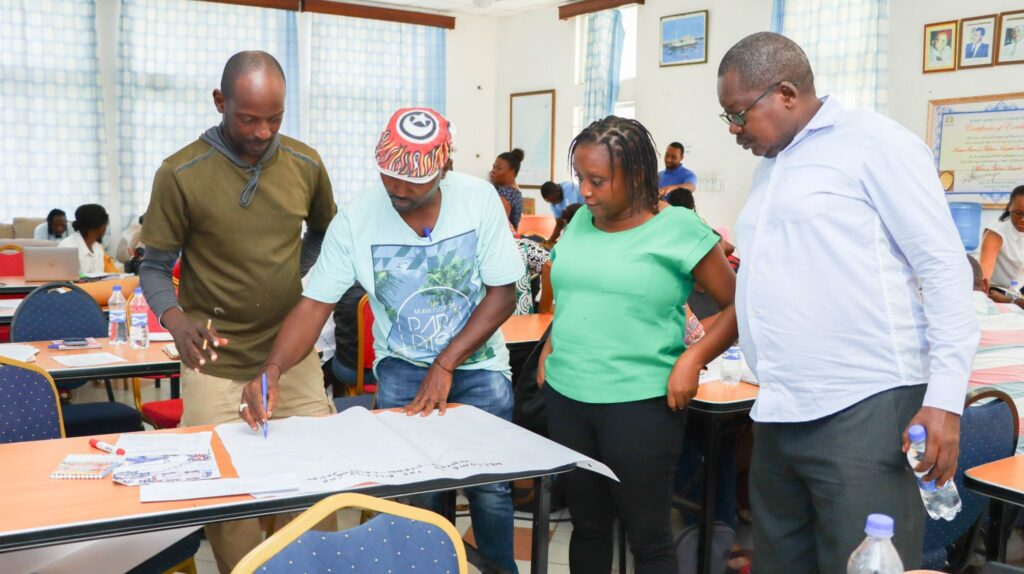
Group Activity, Participants Engaged in a Storytelling Exercise Using Pictures During the Workshop.Photo credit KMFRI
The Mchongo Community based organization (CBO) from Vanga is a youth artist group from Kwale County, some members were among the participants at the Workshop. Led by their founder Bwamree Masha, also known as Uncle Zinga, the group uses skits and drama to communicate important messages to their community.
“In our community, information from the government about health and environmental issues often does not reach us effectively,” Masha explained. “We decided to use our talents to relay these messages so that people can understand what new developments are happening around us.”
The group, which currently comprises 30 young people, emphasizes gender inclusion, involving both women and people with disabilities. One of their significant projects addressed the environmental impact of mangrove cutting in their village, which is surrounded by mangroves.
“People were cutting mangroves for building materials and firewood, we created a play to educate the community about the harmful effects of cutting down the mangroves, which we performed in schools and public spaces twice a week.
“Our message revolved around the fact that mangroves are highly effective at capturing and storing carbon dioxide from the atmosphere, helping to mitigate climate change. They also provide critical habitat for a variety of species, including fish and birds. This play helped the community understand quickly and led to a significant reduction in mangrove cutting,” Masha added.
Masha highlighted the critical role of collaboration between scientists and artists in disseminating research findings.
“When a scientist conducts research and wants to share their findings, involving an artist can help present the information in a simpler way that the community can easily understand,” he stated.
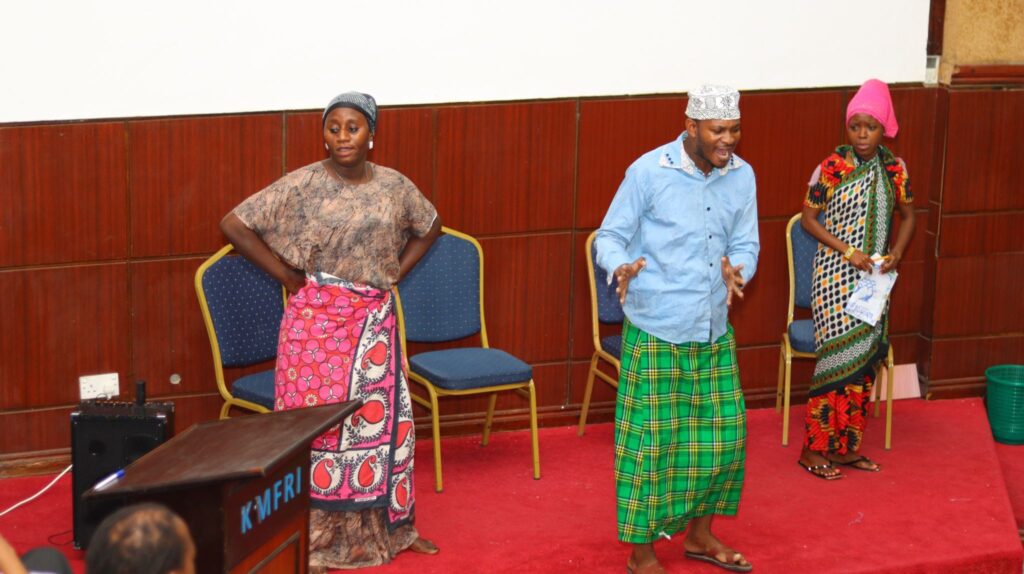
Mchongo CBO Performing a Skit During the Science Café. Photo credit KMFRI.
Omar Ahmed, popularly known as Bobinho, is a renowned artist from Lamu County. In a region where the majority of the population relies on fishing as their main economic activity, Bobinho has carved a niche for himself by painting shops with various kinds of fish species.
“I mostly paint shops,” said Ahmed. “Many people request fish paintings, so I often draw different types of fish. I love drawing fish because they are a vital resource for us who live by the sea.”
Ahmed was among several artists who participated in the workshop. He emphasized the importance of collaboration between scientists and artists, stating that scientific information can significantly enhance the value of marine species artwork.
“When scientists collaborate with artists by providing various scientific information, it can become a major source for artists to sell different marine species drawings to the community and tourists, thus boosting the income of the artists and the country as a whole,” Ahmed explained.
The workshop inspired Ahmed to expand his artistic repertoire to include the “big five” species found in the ocean, drawing a parallel to the famous “big five” in wildlife art. He plans to include billfish and other notable species in his work.
“By attending this workshop, I’ve been inspired to start drawing the big five species found in the ocean, including billfish and others. Just like the big five wildlife pictures that are widely sold, I want to make various fish drawings marketable,” he concluded.
The four days Ocean Literacy Training Workshop concluded with a vibrant “Art Meets Ocean Science” Café Science at the KMFRI Mombasa Auditorium. The event attracted over 100 participants who engaged in insightful discussions, enriched by dynamic performances demonstrating the power of creative expression in conveying complex scientific concepts.
KMFRI Acting CEO Dr. James Mwaluma graced the event and commended the organizers for their innovative approach to making science more accessible, particularly to non-scientists.
“Integrating art into ocean literacy for policy and practice in the western Indian Ocean is the first of its kind from our institution. We are glad to see this movement of researchers changing the way we communicate science,” he said.
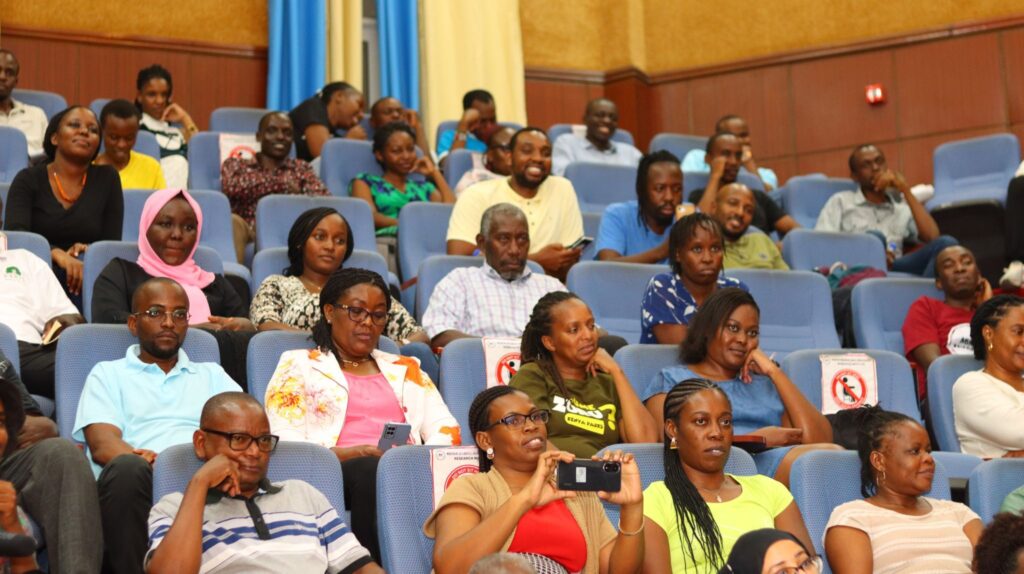
Participants at the Science Café in the KMFRI Mombasa Auditorium. Photo/KMFRI
Dr. Mwaluma emphasized the potential impact on the Kenyan education curriculum, expressing hope that these efforts would inspire the inclusion of ocean literacy. This he said would enhance the understanding of ocean ecosystems within schools.
“Very few people have the privilege to engage in this field, and therefore we have the obligation to inform society about what lies under the water. It is critical that we as scientists embrace a different script in terms of how we communicate,” he concluded.
The workshop and Café, was a collaborative effort funded by the Western Indian Ocean Marine Science Association (WIOMSA) and organized by Kenya Marine and Fisheries Research Institute (KMFRI), led by KMFRI Principal Research Scientist Dr Jacqueline Uku, in partnership with Alliance Française de Mombasa, and Under the Microscope (UtM).
